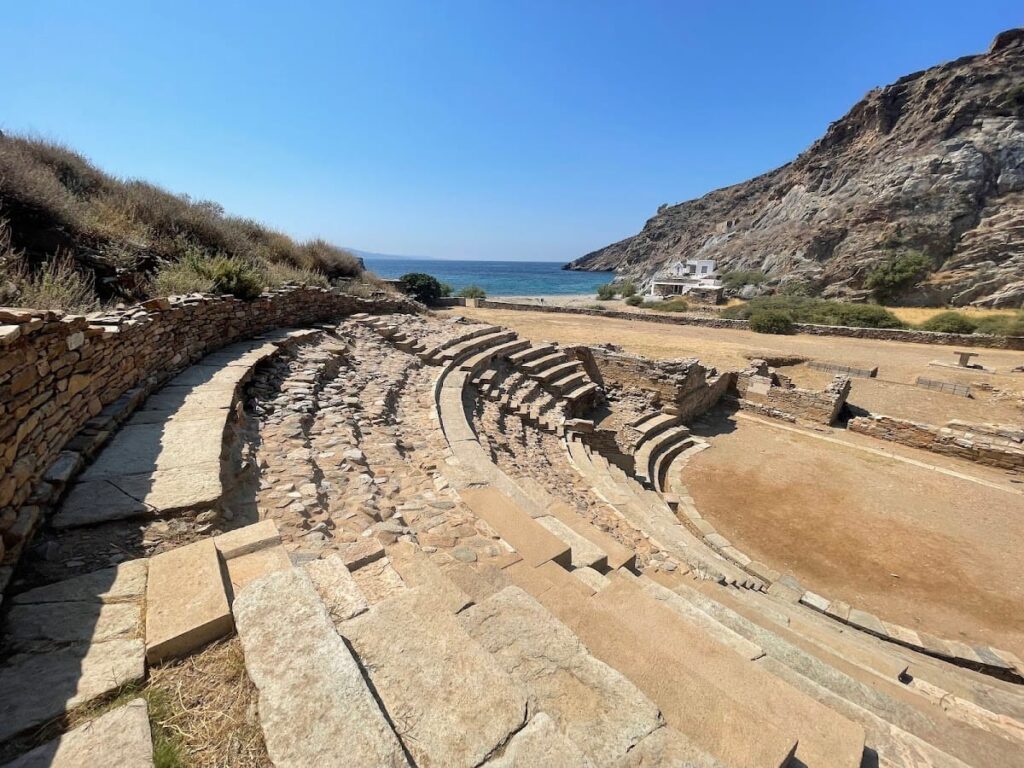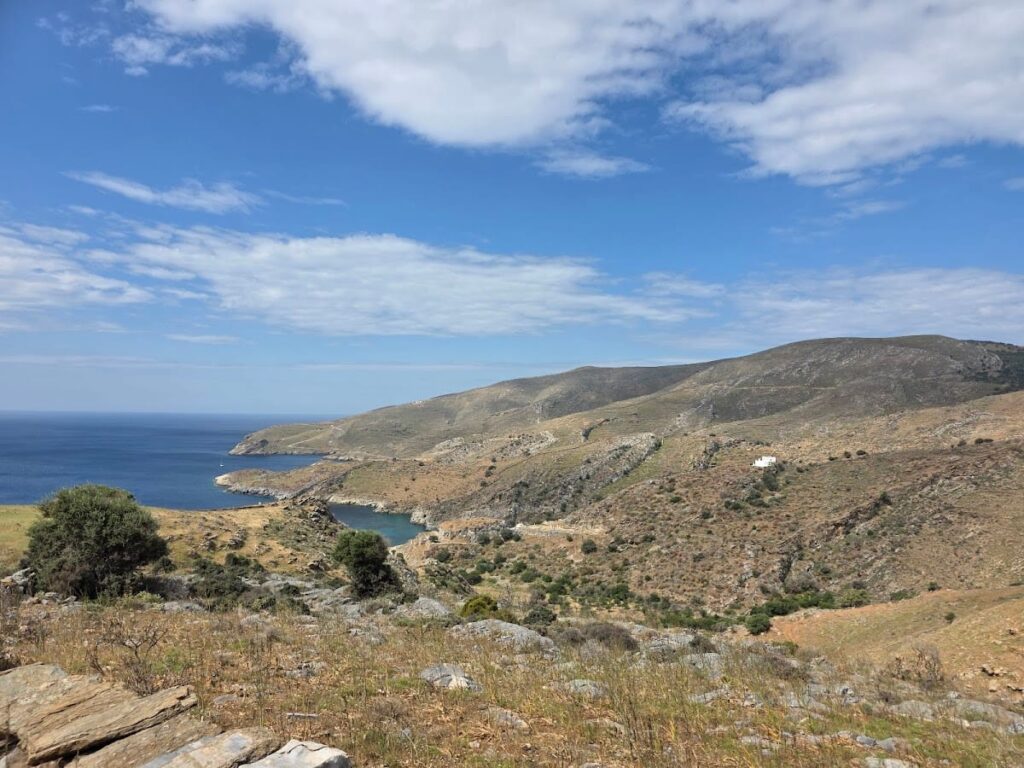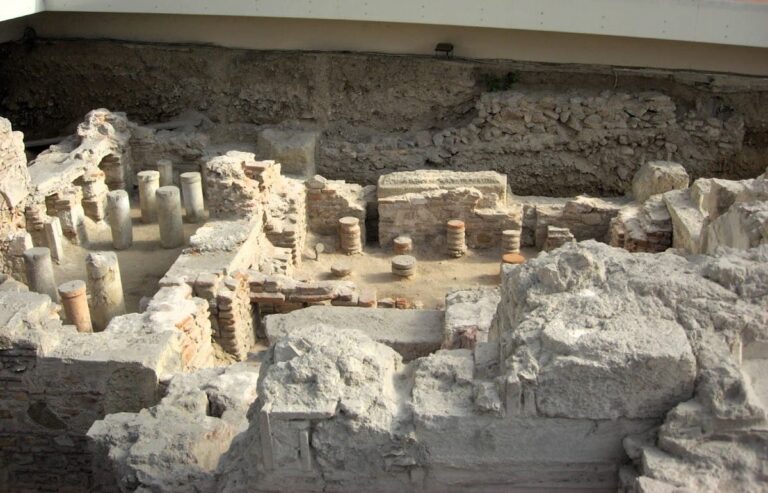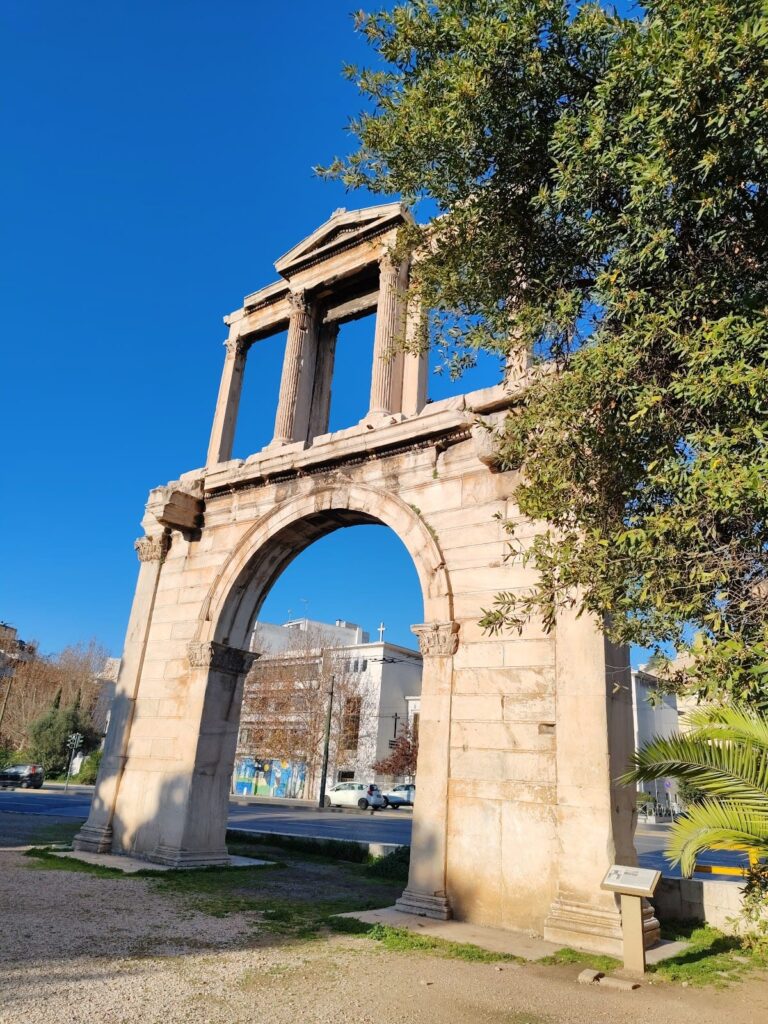Karthaia: An Ancient Greek City-State on Kea Island
Visitor Information
Google Rating: 4.8
Popularity: Low
Google Maps: View on Google Maps
Country: Greece
Civilization: Greek, Roman
Remains: City
History
The Archaeological Site of Karthaia is located on the island of Kea in the Cyclades, Greece. It was established by ancient Greek settlers and inhabited continuously from the 8th century BC, during the Geometric period, until the 6th century AD in Late Antiquity. Karthaia was one of four city-states on Kea and served as an important harbor in the Cyclades.
From the 8th century BC through the Archaic and Classical periods, Karthaia developed as a fortified settlement. Its acropolis, described by ancient authors such as Strabo and Pausanias as a narrow ridge, was enclosed by walls built between the 6th and 4th centuries BC. During this time, significant religious buildings were constructed, including a temple dedicated to Apollo Pythios around 530 BC and a smaller temple to Athena around 500 BC. These temples indicate the city’s religious importance and connection to major Greek deities.
In the Hellenistic period, around the 3rd century BC, public buildings such as Building D were erected on the acropolis, reflecting continued civic activity. The city also featured a stone-built theater from the 4th century BC, showing cultural development. The presence of Roman baths near the theater suggests that Karthaia remained inhabited and adapted during Roman times.
By the 6th and 7th centuries AD, many ancient monuments had collapsed. Graves were dug within the ruins of temples and public buildings, marking the final phase of habitation. After this period, the site was abandoned and fell into ruin.
The territory of Karthaia extended over the southeastern part of Kea, with evidence of farm structures, towers, metallurgical workshops, and a network of roads still visible today. The ancient harbor included a submerged jetty constructed of rocks and slabs, highlighting its maritime role.
The site was misidentified by early visitors from the 17th century until 1811, when Danish archaeologist P.O. Brøndsted correctly identified it as Karthaia through inscriptions found during excavations. Scientific archaeological research began around 1900, with major excavation and restoration campaigns conducted by the Greek Ministry of Culture in the early 21st century, supported by the European Union.
Remains
Karthaia’s acropolis is located on the Aspri Vigla hills, naturally enclosed by two valleys and the sea. The site is surrounded by walls over two kilometers long, built between the 6th and 4th centuries BC. These walls enclose two artificial terraces that supported temples and public buildings.
On the lower terrace near the sea stands the temple of Apollo Pythios, dating to around 530 BC. This temple was the main religious center and was surrounded by dedications such as statues and public decrees displayed in front. The temple remains in situ, with some architectural elements preserved.
The upper terrace contains a smaller temple from about 500 BC, likely dedicated to Athena. Marble sculptures depicting scenes of Amazonomachy, battles between Greeks and Amazons, were part of its decoration. Fragments of these sculptures are now housed in the Archaeological Museum of Ioulis.
A classical marble Propylon, or monumental gateway, from the mid-5th century BC marks the main entrance to the upper terrace and acropolis. It is accessed by a stone-paved sloping path from the west and a Late Archaic flight of stairs carved into bedrock on the east. These features formed a processional route connecting the terraces.
Building D, dating to around 300 BC, is a large public structure on the upper terrace. It features a six-step staircase leading to a pronaos, or entrance porch, with four semi-fluted Doric columns set between walls. The nearly square main room, or cella, has a mosaic floor made of white sea pebbles surrounding a central square of purple volcanic stones and a limestone base.
Near the Vathypotamos stream at the foot of the slope lies a circular stone theater from the 4th century BC. It could seat about 1,000 spectators and is currently under excavation and preservation. Adjacent to the theater, a complex of Roman baths has been uncovered, indicating continued use into Roman times.
The ancient harbor includes a submerged jetty between two bays, measuring approximately 160 meters long and 35 meters wide. It was built from rocks, slabs, and pebbles and extends to a small rocky islet, demonstrating advanced maritime construction.
At the summit of Aspri Vigla hill, where the modern church of Theotokos of the Myrtles now stands, there was an ancient temple dedicated to an unknown deity. Nearby, an Early Christian basilica lies in the bed of the Vathypotamos stream. This church was built using reused materials from an ancient temple attributed to Demeter.
The slopes of the hill contain remains of private houses, including walls, thresholds, and stone heaps, along with pottery and tools. Water supply systems such as cisterns and pipes dating from the Hellenistic to Late Roman periods have been found south of the theater, east of the Apollo temple, and along the path connecting the terraces.
The ancient cemetery is located outside the city walls in the Kalamitsis valley. Graves from the 6th and 7th centuries AD were dug within the ruins of temples and public buildings, often reusing architectural fragments, marking the last phase of occupation at Karthaia.










